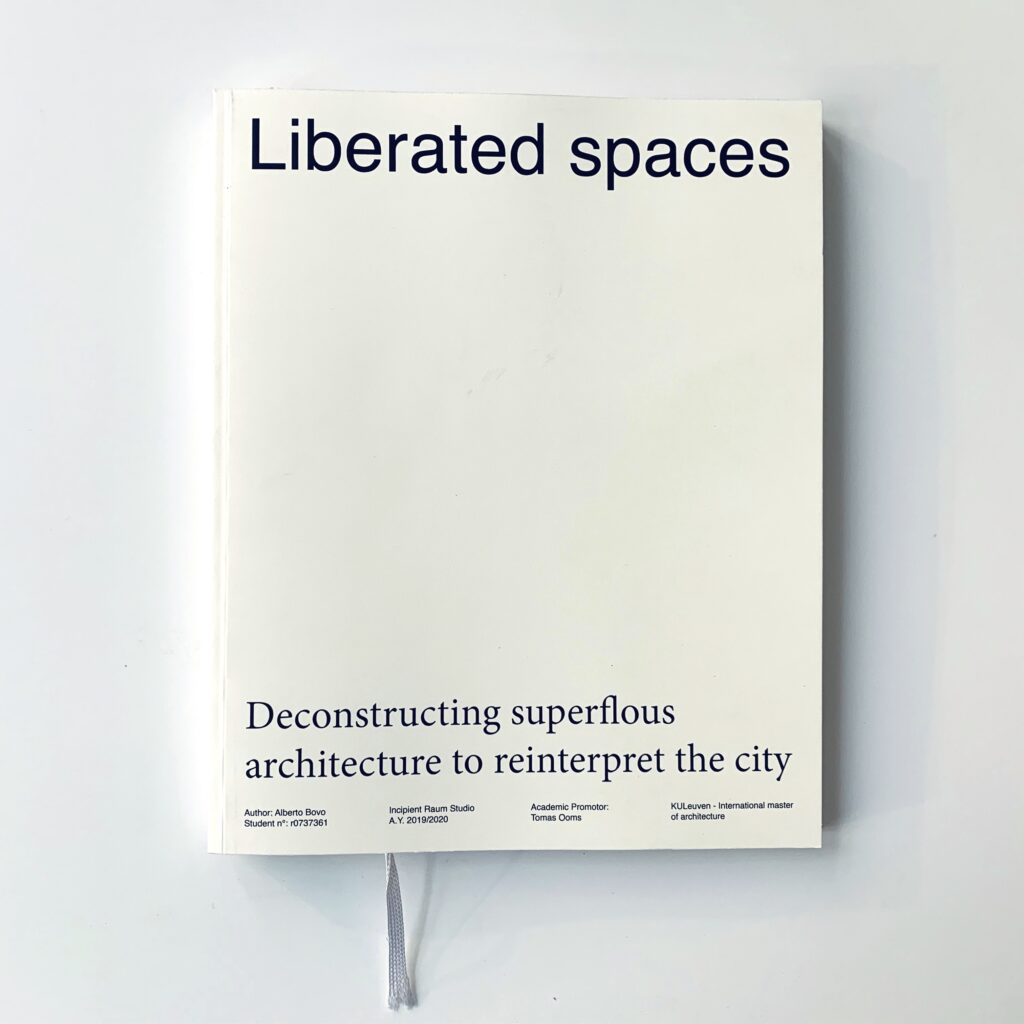Liberated Spaces as a designerly exploration have as their subject the city of Urbino, a small town in central Italy. It is characterised by an extremely well-preserved and well-protected architectural heritage. Besides its heritage, Urbino is also known for its university. It is one of the most ancient in Italy. Cut off from the major road networks and economic interests, Urbino is facing an economic stagnation which is the main cause of a substantial demographic decline.
The design-driven research shows that the current social landscape is evenly divided into two groups: students and local citizens. Albeit equal in number the way these two populations inhabit the city is rather diverse. The many discrepancies between the two communities has led to a social polarisation that constitutes a burden to an already difficult situation. Moreover, what was once mainly a socially divided environment has now also become a physically polarised area. Citizens and students have different ages, different needs, and live in different parts of the city, further complicating the possibilities for dialogue between the two communities.
Liberated Spaces envisions a more pertinent and relevant distribution of the population within the Municipality. Two different strategies are proposed to facilitate a stable permanence for students, thus more opportunities for them to feel attached to the city, and to raise the chances of interaction between the two communities.
The work visualises a shift in the current leading paradigm of economic growth proposing an extension of human relations instead of market relations. Liberated Spaces means spaces freed from the logic of the market, where human welfare is valued more than economic welfare. Testing a model based on degrowth makes even more sense in a shrinking city where the results of unnecessary growth are visible and embodied by the many empty buildings.
How can architecture support degrowth?
What are the boundaries of contemporary architecture in a strictly preserved historical context?

